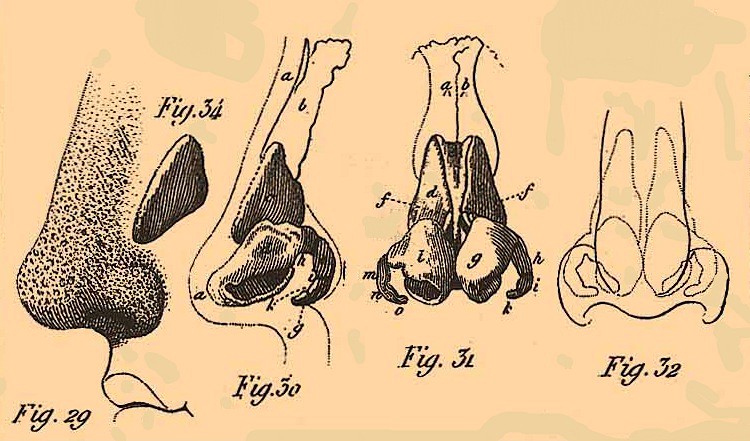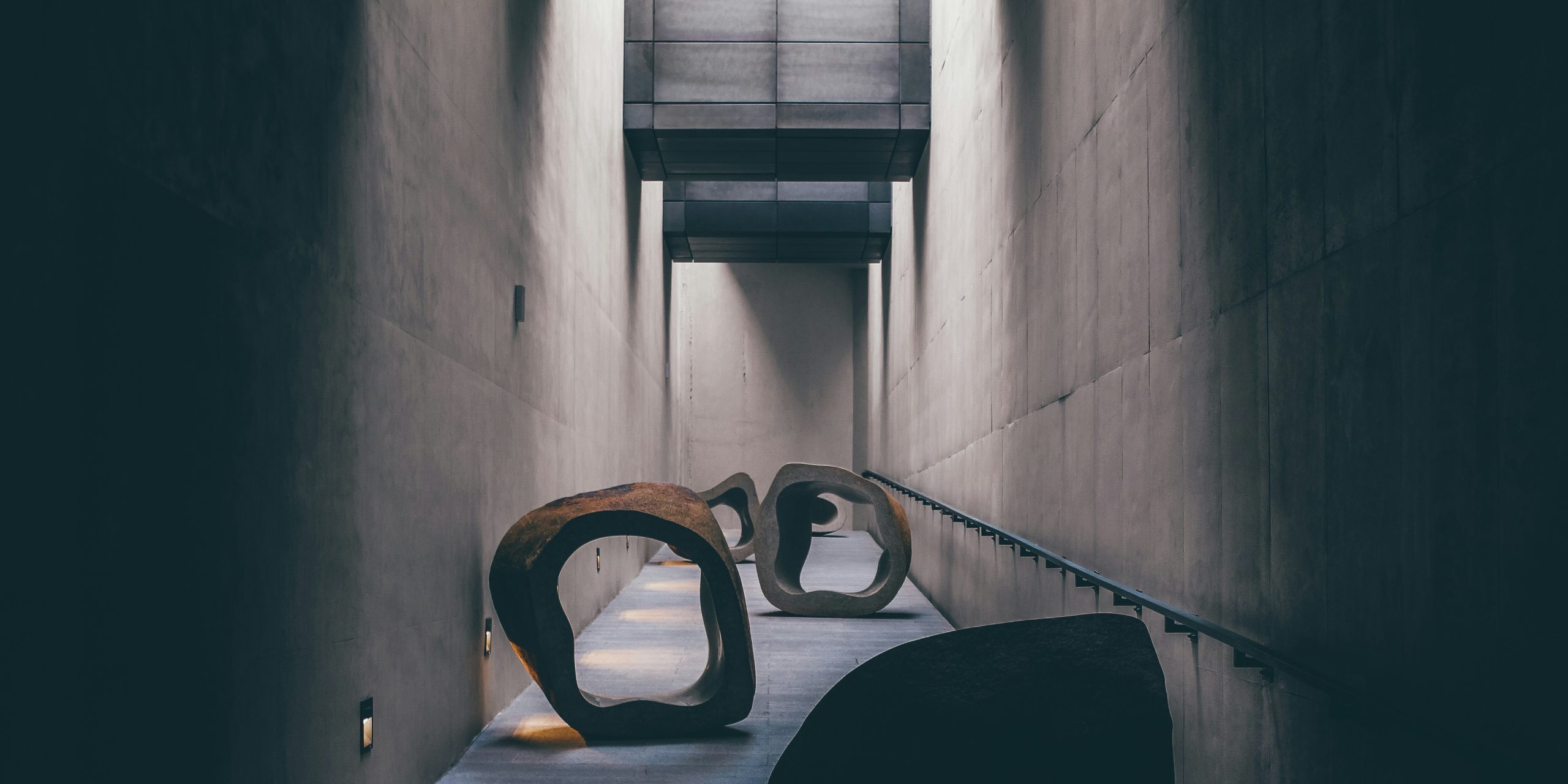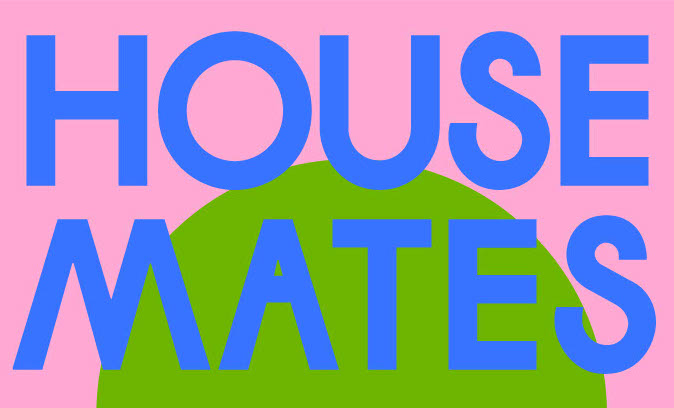news
Words of Art: James Hannaham’s “Lengthy Statements/Brief Statements” at the Kimberly Klark Gallery

[Editor’s note: James Hannaham will teach a short story workshop in partnership with Electric Literature and Catapult on April 27th. There are still a few spots left.]
If you were walking on Woodward Avenue in Ridgewood Queens and you peeked into the window of the Kimberly Klark gallery right this second, you’d see that the art in this gallery isn’t painting, drawing, sculpture, installation or performance; it’s writing on the walls. We all know writing is “art,” but what happens when writing becomes art-art? In a polygot-tastic move, novelist James Hannaham (Delicious Foods) is the accomplished artist behind the new text-based art show “Lengthy Statements/Brief Statements.” His work reminds us — among other things — of the thin and sometimes arbitrary line between “art” and “writing.”
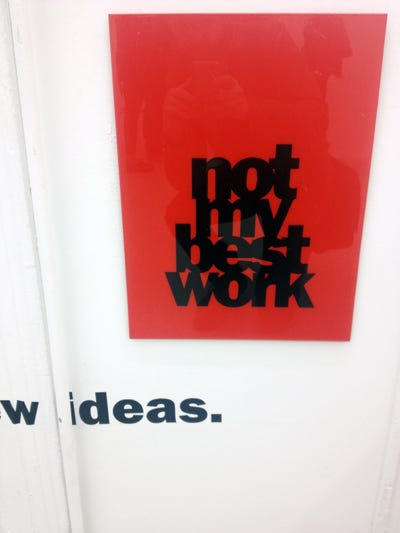
On the small white walls of the gallery are three sentences (well, maybe four) in black letters which wrap around the length of the gallery, over the window around corners and into and out of a small closet. Reproducing the contents of the sentences in their entirety here would be a total spoiler, so I’ll just say there’s something about the sentences being in a physical space that is essential of the experience of reading them. At the opening, a lot of the folks were spinning around on their heels, bobbing their heads around, and embodying these sentences — turning their bodies and transforming the act of reading into a sort of shuffling subtle softshoe. The contents of the sentences play with certain statements we all make — or have all heard — about the creative process.
Punctuating the wrap-around sentences are rectangular individual signs containing punchy phrases that sound like they’ve come straight out of a parody of a creative writing workshop. “Not My Best Work,” is any easy favorite for anyone who has created anything, but the more biting “It Fails On Its Own Terms” asserts a wonderfully glib and paradoxical smack to the critical brain. This one is located toward the floor of the gallery making you crane your neck to look at it and literally look down on the phrase. While this is happening, you’re forced think if you’ve used this phrase before and whether or not you were totally full of shit when you said it. What are a thing’s “own terms” anyway?
Intentionally, the font used is very similar to the font of the MoMA. Hannaham wielded a vinyl letter cutter to craft these statements, which if you squint a certain way is an even more hardcore way of “writing” than using a vintage typewriter. Hannaham told me that the font is Franklin Gothic Heavy, or something close to it. “The earlier work I’ve done, ‘didactics’ and ‘wall texts’ is intended to look exactly like something at MoMA.” This sensibility was echoed by one of the gallery’s curators who said to me at opening on Saturday, “What if the wall text you see at a show could be the show? Sometimes there’s a feeling of having read the wall text in an art museum. I think this show creates that feeling.” All of this follows in the footsteps of Hannahams previous text-based art shows like “Card Tricks,” which actually did attempt, in the author/artist’s words were “wall texts for artworks which were impossible to fabricate.”
Still, when we read wall text in museums, we don’t think about a person actually making the letters, but in this case, we do. Both the creation of the letters and affixing them to the walls of the gallery is a quotidian process very different (perhaps) from the wall texts at places like MoMA. But, Hannaham did clarify to me that “None of it [the creation of the letters] is ‘freehand’ exactly, except for the install itself. The cutter precisely cuts out the lettering and then you have to remove the parts of the vinyl you don’t want…”
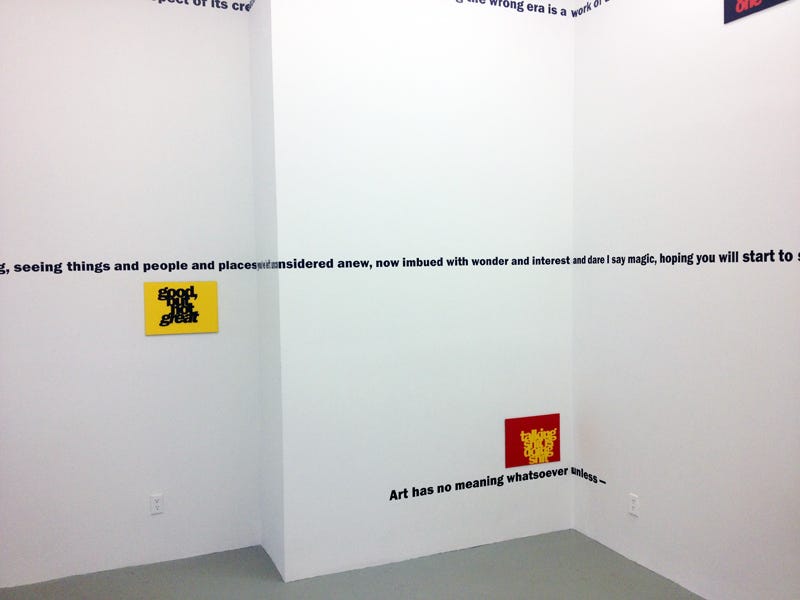
Cutting and removing sentences you don’t want with precision is something writers generally do with Microsoft track-changes. Here, Hannaham is doing it with his hands and a blade, combining the notions that art is something we do with our brains versus something we do with our hands.
Kimberly Klark has a set of curators/ directors who all wanted to remain anonymous for the purpose of this article. One of the directors who helped to develop and install “Length Statements/Brief Statements,” told me at Saturday’s opening that this text-based show “is the first like it,” but was keen to point out the gallery itself “doesn’t have any specific aesthetic thrust.” This notion was supported by another gallery director who mentioned that the Kimberly Klark gallery is “trying to do multi-disciplinary programming in a holistic way.” In chatting with everyone, it was clear that none of these curators/artists are just one thing or another and that the Kimberly Klark gallery is just as likely to have a poetry reading as it is to have a traditional art show.
Of course text-based art like Hannaham’s is not completely new. From Jenny Holzer to Bruce Nauman, words as art made for the world of art are certainly a thing. In a sense, everybody likes text based art because it’s a comforting medium for those who feel like they’re lay-people when it comes to “real” art. Still, because James Hannaham is such a literary figure, this bridging of text and art succeeds in ways that perhaps Holzer or Nauman’s pieces never could.
As one of the directors and I were trying to pick our favorite phrase in the show, someone said they thought the statements were successful because we were seeing “prepackaged sentences and the types of things you hear because people want an excuse to talk.”
At which point I closed my mouth and we stood there, totally silent and reading.
“Lengthy Statements/Brief Statements” is on display at the Kimberly Klark gallery until 5/10/15.





